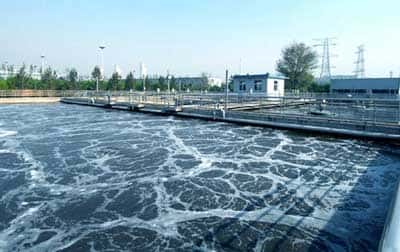Thorough Summary of The Typically Used Chemical Substances During Circulating Cooling Waters
There are numerous types of organic phosphonic acids, however in their own molecular structure they have a phosphonic acid group straightly attached to a carbon atom. And also molecule may also contain groups just like -OH, -CH2 or even -COOH.

For this reason, the quantity of phosphonic acid groups held in the molecule is decided. The organic phosphoric acid is usually classified in to a diphosphonic acid, a triphosphonic acid, a tetraphosphonic acid, a pentaphosphonic acid etc. Based on the kinds of molecular structure, the organic phosphoric acid may be even further divided into a methylidene phosphonate category, a homocarbodiphosphonic acid category, a hydroxy acid phosphonic acid type, and other atomic phosphonic acid type.
Organic phosphoric acid is really a fresh product created in the later 1960s. On the other hand, it had been largely used in circulating cooling water treatment solution within the Nineteen seventies. This is because it contains the benefits listed below.
At first, they all have a C-P bond in their molecular structure, which bond is much stronger than the P-O-P bond in polyphosphate. Thus, it’s nice chemical stableness. It is not really very easily hydrolyzed, and it’s also resistant against high temperature. While in the use, it will not cause orthophosphoric acid to be overproduced as a result of hydrolysis.
Secondly, it possesses a crucial effect similar to polyphosphate. It is only a few mg/L of organic phosphonic acid that could stop the precipitation of numerous hundred or so mg/L of calcium carbonate.
During certain use, it can be learned that the use of an organic phosphonic acid in combination with a polyphosphate is preferable to any existing individual types. In addition to polyphosphate, it as well has a nice synergistic effect along with a number of chemicals.
Because of this, during practical apply, most people usually choose the chemical method while using best synergy.
Besides the above advantages, the organic phosphonic acid also has excellent corrosion inhibition qualities at high quantities. And it is a non-toxic or even particularly low-toxic chemical. As a result, there’s no need to worry about environmental pollution in the time of apply.
Commonly applied organic phosphonic acid
There are several different types of organic phosphonic acid, nevertheless the next widely apply agent within circulating cooling water are listed below.
1. ATMP
The chemical product name is amino trimethylene phosphonic acid. ATMP 50 features great chemical stableness, is tough to hydrolyze, and is also resistant to high temps. When it is formulated together with zinc salts and copolymers, it has a superior synergistic effects along with a solubility limit effects.
This chemical also provides superior corrosion inhibition overall performance at high amounts. And it’s a non-toxic, pollution-free agent. ATMP 50 has got excellent dispersion and also scale inhibition properties for calcium carbonate scale.
2. EDTMP
The actual chemical name is ethylene diamine tetramethylene phosphonate. It could chelate along with a plurality of metal ions to create a plurality of monomer structure macromolecular system complexes, which are freely spread inside waters to eliminate the calcium scale crystal.
3. HEDP 60
HEDP chemical is an organic phosphonic acid of the same carbon diphosphonic acid type. It’s molecular structure doesn’t have N. Its chemical name is hydroxyethylidene diphosphonic acid. HEDP could form stable complexes with various metal ions like steel, copper and zinc, and may melt oxides on steel surfaces.
4. DTPMA
DETPMP is really an organic phosphonic acid created in the Nineteen eighties. It’s chemical term is diethylene triamine penta methylene phosphonic acid.
It’s always characterized by its mix along with Mm2+, which has great corrosion inhibition capability both for carbon iron and copper alloy. Because Mm2+ isn’t covered by environmental laws, the ingredients of the chemical has got attracted excellent attraction internationally.
DTPMP, such as the previously mentioned organic phosphonic acid. It can also chelate along with a plurality of metal ions. The organization of 2 or more three-dimensional macromolecular ring complexes, loosely spread in water, damages the development of calcium carbonate crystals, and thus playing a part of scale inhibition.
5. Phosphonic Acid
The phosphonic acid molecule contains both a phosphate group -PO(OH) 2 and a hydroxyl group -COOH. According to them all during the combination
You will find lots of varieties in the place and also number of items. In our own company’s formulation, PBTC scale inhibitor can be used much more. It’s chemical title is 2-phosphonobutane-1 2 4 trihydroxy acid.
6. Organic Phosphonate
There are numerous different types of organic phosphonates, however, following groups are found in their molecular structure:
Because organic phosphates are certainly toxic to aquatic animals and slowly hydrolyze, the hydrolyzed products are also able to degrade naturally and therefore haven’t any impact on the environment.
Organophosphates are generally used in combination with some other chemicals such as polyphosphates, zinc salts, lignin and benzotriazole.
The above is a thorough overview with the widely used agents during circulating cooling water. When you have questions on the water treatment chemicals, please email us.
Title:
Thorough Summary of The Typically Used Chemical Substances During Circulating Cooling Waters
https://www.irohedp.com/thorough-summary-of-the-typically-used-chemical-substances-during-circulating-cooling-waters